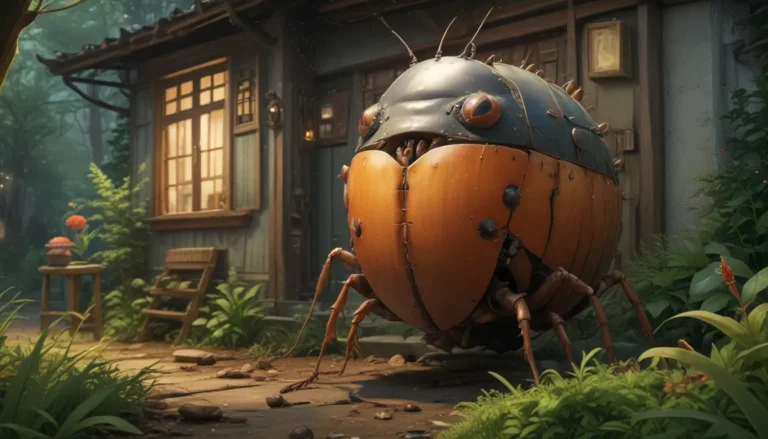Preventing and Managing Bird of Paradise Diseases: A Comprehensive Guide

Birds of paradise plants are undeniably stunning with their tropical fronds and unique flowers that resemble folded origami birds. However, when these plants become afflicted with diseases, it can be concerning for any gardener. To ensure the long-term health and survival of your beloved birds of paradise, it is essential to be armed with knowledge on how to prevent and treat common diseases that may affect them.
In this comprehensive guide, we will explore the most common diseases that can plague your Strelitzia plants, their causes, and effective strategies for control and prevention. By being proactive and equipped with this information, you can ensure that your birds of paradise thrive and flourish in your garden.
Identifying and Managing Common Bird of Paradise Diseases
1. Armillaria Root Rot
Armillaria root rot primarily affects woody trees and shrubs, but it can also afflict herbaceous plants like palms and Strelitzia. This disease is caused by various species of the fungal genus Armillaria, with A. mellea being a common culprit in home gardens.
Symptoms of Armillaria root rot include rotting and necrotic roots, leading to wilting shoots, dieback, and thinning of the plant. In advanced stages, you may notice a change in leaf color and premature defoliation. Additionally, the presence of light brown mushrooms, white mycelium, and blackened fungal tissues are indicative of this disease.
Unfortunately, there is no cure for an infected Strelitzia plant. However, you can prevent the spread of the disease by removing and disposing of infected plant tissues and replacing the soil with fresh, disease-free soil to the depth of the affected roots.
2. Bacterial Wilt
Caused by the soil-borne bacterium Ralstonia solanacearum, bacterial wilt is a destructive disease that spreads through infected plants, soil, and irrigation water. Symptoms include wilting stems and leaves, leaf desiccation, cankers above the crown, and root rot.
To prevent the spread of bacterial wilt, it is crucial to remove infected plants and adjacent soil to reduce the presence of the pathogen in your garden.
3. Botrytis Blight
Botrytis blight, also known as gray mold, is caused by various species of the Botrytis genus of fungi. Symptoms include browning of buds and floral tissues, development of brown spots on leaves and blooms, and the presence of gray mold on affected plant structures.
Preventing botrytis blight involves removing infected plant parts, clearing debris, providing adequate airflow, and avoiding overhead watering. Copper fungicides can be used preventatively, and infected plants should be disposed of to prevent further spread of the disease.
4. Fungal Leaf Spot
Fungal leaf spot is a common ailment that affects the leaves of ornamental plants, caused by various fungal pathogens. Symptoms include darkened spots on leaves that grow or merge into larger blotches, leading to foliar stress, chlorosis, and premature leaf drop.
Preventing fungal leaf spot involves cleaning up debris, avoiding overhead watering, and maintaining proper plant spacing for improved airflow. Fungicides can be used as a last resort, but it is essential to identify the specific pathogen and use the appropriate product to avoid resistance.
5. Pythium Root Rot
Pythium root rot is caused by soil-borne species of the Pythium genus, which thrive in wet soil conditions. Symptoms include darkening and decay of roots, yellowing of plant tissues, and stunted growth.
Prevent Pythium root rot by ensuring well-draining soil, avoiding overwatering and excessive fertilization, and using beneficial microbes like Trichoderma fungi. Solarizing the soil before planting can also help prevent this disease.
Nip Strelitzia Sickness in the Bud!
Equipped with the knowledge of common bird of paradise diseases and their prevention and treatment strategies, you can ensure the health and vitality of your Strelitzia plants. Remember, maintaining a disease-free garden requires proactive measures and vigilance.
As Captain Jean-Luc Picard wisely said, “It is possible to commit no mistakes and still lose. That is not a weakness. That is life.” Remember that gardening is a learning process, and mistakes are part of the journey.
If you have any questions, anecdotes, or tips to share, feel free to leave them in the comments section below. As a community of gardeners, we can learn from each other’s experiences and insights.
For more information on caring for Strelitzia plants, check out our additional guides on pruning, indoor growing, and overwintering your birds of paradise. Happy gardening!
Remember, a healthy garden starts with healthy plants. Take the necessary steps to prevent and treat common bird of paradise diseases, and watch your Strelitzia thrive!





